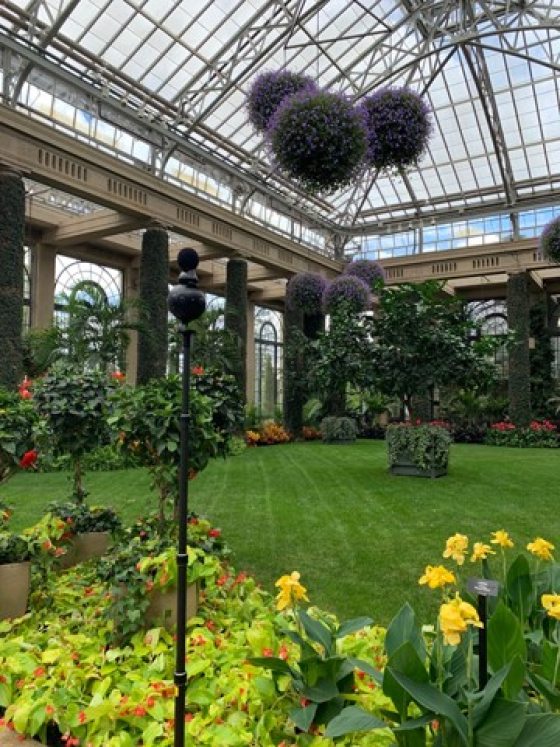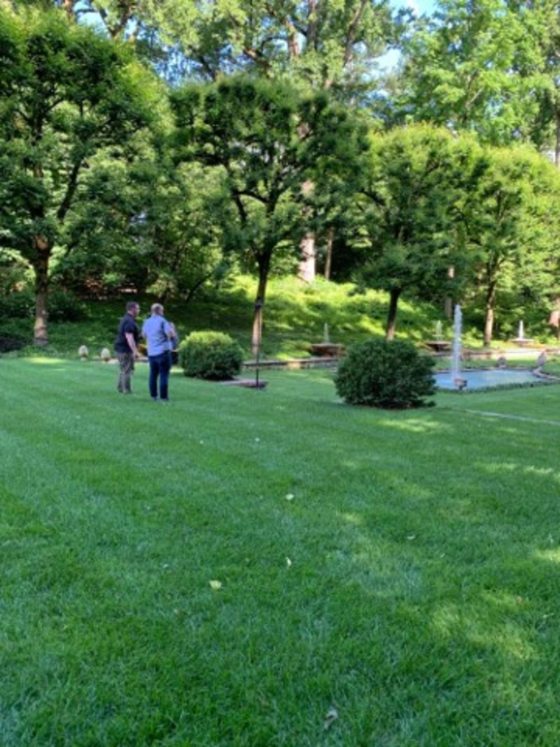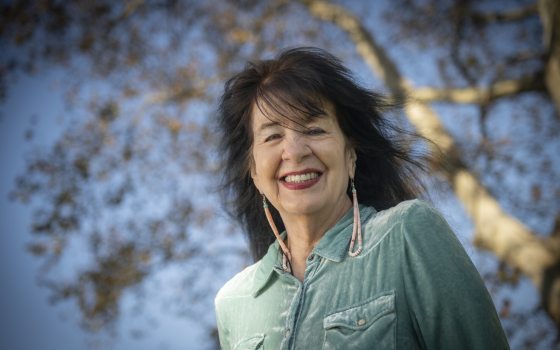It’s hardwired in our genes to respond positively to nature. In nature, we feel our connection to entities beyond ourselves and understand our interdependencies with other living beings. It’s common knowledge that getting outside is good for us … but can the act of simply visualizing nature, even when not able to physically be in nature itself, lead to beneficial effects? According to distraction therapy, the answer is a resounding yes … and with ChristianaCare’s recent efforts with distraction therapy and capturing scenes filmed at Longwood to be experienced via virtual reality during chemotherapy treatment, nature—even when experienced virtually—is nothing short of soothing.

Roger Ulrich, a leading researcher on how nature, gardens, and art can lessen pain and stress, notes our predisposition to the soothing effects of nature, stating "We have a kind of biologically prepared disposition to respond favorably to nature because we evolved in nature. Nature was good to us, and we tend to respond positively to environments that were favorable to us." In 1993 Ulrich and his colleagues at Uppsala University Hospital in Sweden randomly assigned 160 heart surgery patients in the intensive care unit to one of six conditions: simulated “window views” of a large nature photograph (an open, tree-lined stream or a shadowy forest scene); one of two abstract paintings; a white panel; or a blank wall. Surveys afterward confirmed that patients who were assigned the water and tree scene were less anxious and needed fewer doses of strong pain medicine than those who looked at the darker forest photograph, abstract art, or no pictures at all.
Known as distraction therapy, the use of such nature-related sensory stimuli can be utilized for distraction and relaxation in the healthcare setting. In fact, researchers in healthcare are increasingly studying the effects of virtual reality (VR) as a form of distraction therapy, and its value during certain procedures or treatments. As one example, ChristianaCare’s Helen F. Graham Cancer Center & Research Institute is currently conducting research on the effects of a pre-treatment VR educational video on anxiety and perceived self-efficacy for first-time chemotherapy patients.

To conduct this research, ChristianaCare introduced distraction therapy to patients as they were administered chemotherapy. Patients could choose from scenes like a rainforest waterfall, a fall forest, or an alpine lake. “Our objective was to offer our patients a positive, relaxing distraction … an escape from the confinement of the chemotherapy infusion suite and boredom, anxiety, or discomfort they may associate with their chemotherapy treatment,“ says Cynthia D. Waddington, MSN, RN, AOCN, clinical Director of Cancer Programs at ChristianaCare’s Helen F. Graham Cancer Center & Research Institute.
This past summer, after patients expressed a desire to view local scenes during treatment, ChristianaCare hired NAPCO Video of Philadelphia to capture footage at Longwood Gardens to show to patients via VR while receiving chemotherapy. NAPCO captured the sights and sounds of Longwood’s Main Fountain Garden, Meadow Garden, Italian Water Garden, Conservatory, and other spaces to transport guests to Longwood—directly from the chemotherapy infusion suite—through the use of an Oculus Rift VR headset. The use of VR during treatment is meant to decrease the anxiety that comes with receiving chemotherapy, allowing patients to immerse themselves in places outside the cancer center.
“We are able to create location-based, theme-specific footage that goes beyond the limited, expensive stock 360-degree footage that already exists,” shared NAPCO Director of Video Services John Gelety. “We are adding a sense of interactivity with locations that the patient may feel at peace in a way that feels real, whether it be surrounded by the wild nature in Longwood’s Meadow Garden or immersed in the Italian Water Garden. It’s amazing how you can trick the mind into experiencing something based on camera placement and length. It’s escapism from the daily momentum of life,” added Gelety.
Scenes at Longwood are currently in post-production and will soon be incorporated in the locations from which patients can choose to view.


